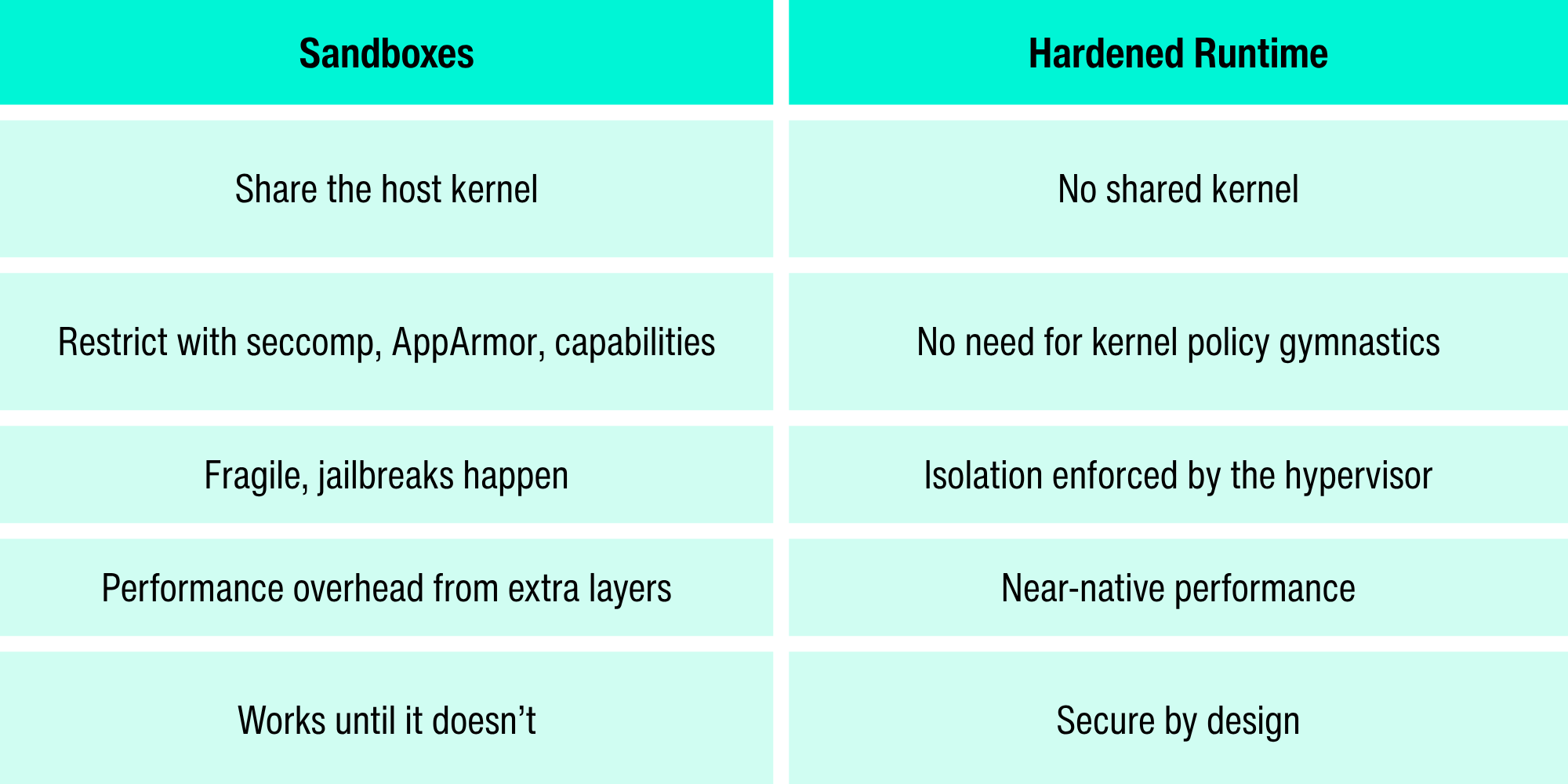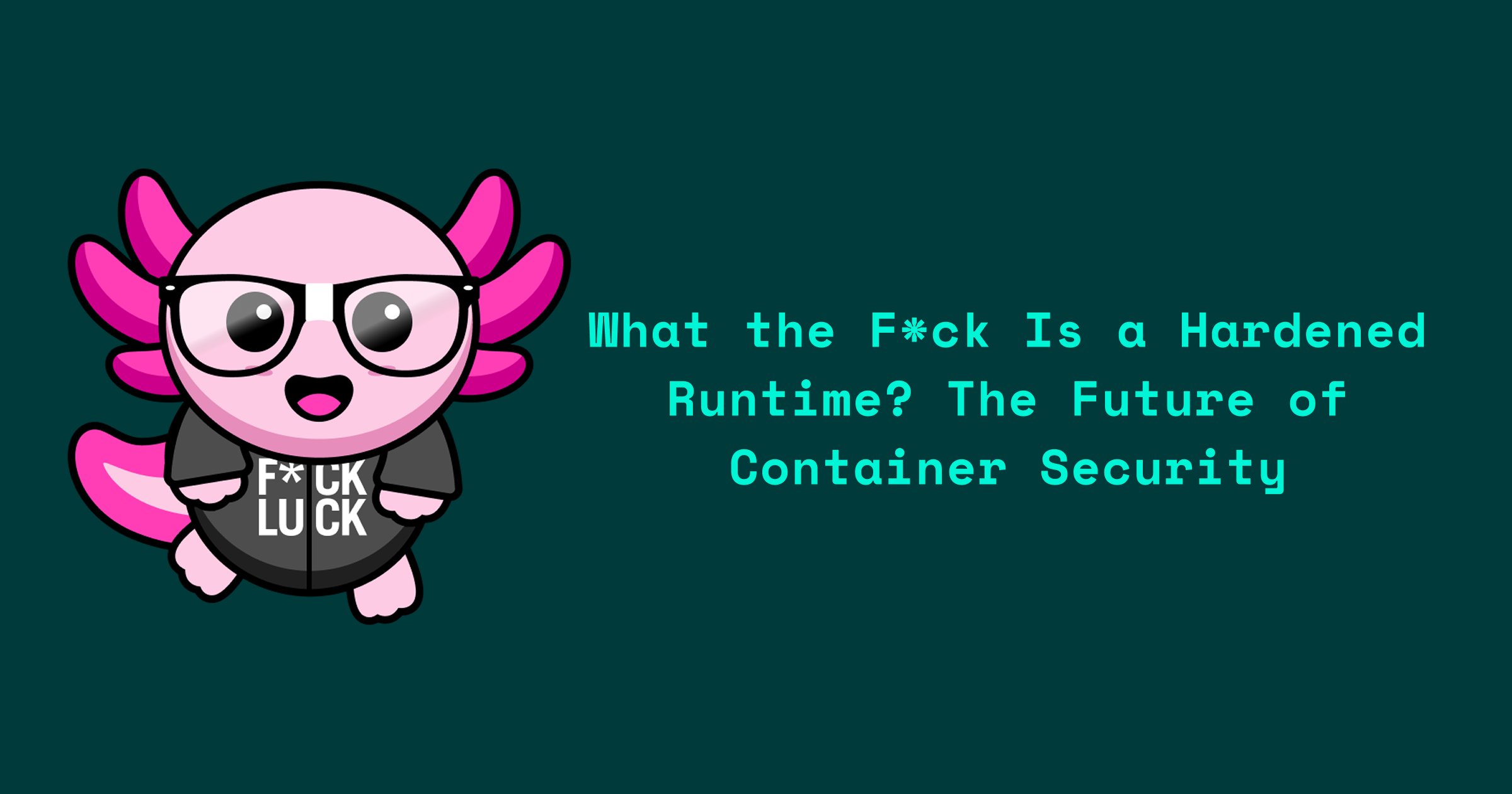What Is a Hardened Runtime? The Future of Container Security
This blog is a part of our “WTF is...?” series that cuts through the noise to explain complex and trending topics in plain English. We break down the jargon, skip the fluff, and give you the essential knowledge you need to understand what’s what. Whether it's emerging technology, industry buzzwords, or confusing concepts, we strive to make it accessible.
Container security has a problem: the main focus to address its shortcomings is to rely on sandboxes. Sandboxes work by limiting access to dangerous resources to protect the system from misconfigurations or malicious code. Architecturally, container sandboxes denylist access to resources or introduce additional layers to protect the shared Linux kernel from a rogue container. Sounds good but it’s extremely fragile. One false configuration in a sandbox can negate all the protections.
In short, even the most sophisticated sandboxes are simply bandaids aimed at restricting access to the most vulnerable resource on a system: the shared kernel.
Container sandboxes “contain” workloads by bolting on controls at the Linux kernel level:
- Seccomp to filter system calls
- AppArmor or SELinux to restrict access
- Linux capabilities to trim permissions
Each of these requires authoring security configurations that require perfectly predicting attacker behavior ahead of time and are therefore fragile to breaking or being ineffective. Miss one syscall, or misconfigure one profile, and you’re staring down a container escape. Name a sandbox that hasn’t had multiple jailbreaks.
What Is a Hardened Runtime and How It Solves Container Security
Instead of trying to limit what workloads can reach in the shared kernel, a hardened runtime changes the paradigm:
- No shared kernel. Workloads don’t get to touch host resources at all.
- No need for perfection or stacked controls. If the kernel isn’t shared, you don’t need to rely on predicting your adversaries behaviors perfectly with bespoken seccomp filters, AppArmor rules, or capabilities gymnastics.
- Isolation by design. The workload runs in its own isolated environment, enforced at a hypervisor level with minimal attack surface.
Think of it this way: sandboxing is like letting someone into your house and then locking every room they’re not supposed to enter and leaving a lockpick on the coffee table.
Why Hypervisor Isolation Outperforms Sandboxing in Container Security
- Architectural Security: Sandboxes rely on denylisting. Denylists require unrealistic vigilance, explicitly defending every possible attack path. Hardened runtimes eliminate entire classes of risks by never exposing resources in the first place. No shared file descriptors, inodes, syscalls, or shared kernel to worry about.
- Performance Without Penalty: Every sandbox layer adds performance overhead – syscall filters, kernel mediation, namespace juggling. Hardened runtimes cut through that by removing the shared kernel altogether. With a Type-1 hypervisor under the hood, workloads get VM-grade separation, behaving like containers for developers, with hyperscale cloud performance.
- Future-Proof by Design: AI and GPU workloads push infrastructure harder than ever. Sharing GPUs or exposing device drivers across sandboxes invites existential risk. Hardened runtime isolates these paths at the lowest layers by default, making side-channel attacks and driver exploits structurally impossible.
Most notably, Hardened Runtimes provide strong isolation and remove entire classes of attacks by default. No configuration and policy authoring for each component is necessary.
Sandboxes vs. Hardened Runtime (At a Glance)
Tl;dr: Sandboxes limit what workloads can do. Hardened runtime redefines what workloads are allowed to touch — removing the shared-kernel risk entirely.

The Future of Container Security: Hardened Runtime by Edera
Sandboxes were a patchwork solution for an earlier era of container security. They’re brittle, slow, and prone to jailbreaks.
A hardened runtime flips the model. Instead of containing untrusted workloads with increasingly byzantine rules, it removes the attack surface altogether.
That’s why we built Edera this way: a hardened container runtime that delivers isolation, performance, and future-proof security — without tradeoffs.
Read the full “WTF is...?” series

-3.png)